Rev. Brian Shen-Jin Kenna ThD
When I first started my practice Shen-Xi Sensei recommended a movie “Amongst White Clouds” for me to watch. Since that time it has become a favorite of mine about the Chinese Monks who live high up in the mountains and practice in somewhat solitude. At one point in the movie one of the monks gives a riddle to the filmmaker. It goes like this:
Ten Thousand Things
All in This Breath
Grasping Hold of Emptiness
There’s really nothing to say?
He goes on to give what I like to call a hint or a brief explanation which I can summarize as this: Why are people in this world so busy? Just for one breath? They say “busy busy, mine mine” Busy for a whole lifetime for “Me” When this breath is cut off, you let go of the whole Universe. Why not let go from the start?
What this monk is saying that we live our lives in a scattered state of mind and of perpetual movement that gets us nowhere. Think of the gerbil on a wheel just running and running but ultimately he’s still on the wheel and hasn’t really moved one bit. We’ve developed this concept of “self” that it distorts our view so everything we consider is through the lens of “me”
MY clothes, MY friends, My property, MY practice, MY world. There’s an old saying that people will use to describe another person: “They think the sun rises and sets by them.” Or another “They think the Earth revolves around them.”
So how do we stop this? How do we get off the Gerbil wheel or as the monk put it stop grasping at emptiness? Chan has given us a great blueprint for doing just this in the Ox Herding pictures. I think Sensei introduced them to me right after he told me about the movie. At the time I saw no connection and my unconditioned mind was too busy trying to figure what in world does an Ox have to do with Buddhism? Between the OX, Joshu’s Dog and a Snow Leopard I was beginning to think Zen had more to do with Dr. Doolittle than Siddartha Gutama.
Now years later I have a wonderful illustration of all 10 steps done by student Xing Tzai, that hangs on the wall of my practice space.
So I pose this question to you……in your practice how’s your ox? How are you herding it?
In the handouts that I sent to everyone at the bottom of each illustration is the corresponding portion of what is considered the “original” poem. There have been other translations through the years but best I can find this is considered as the first. So in keeping with tradition that an incoming Prior has an installation poem, mine will reflect my Buddhist thought based on the Ox herding pictures, and expressed in my own words. I will share each portion of my poem as I discuss each illustration, and then read it completely at the end.
The first of the Ox Herding pictures is “Looking for the Ox” It shows the new practitioner who has heard the teachings of the Buddha and the Legacy Masters. He believes in this concept, this thing called Buddha Nature and How the 4 Noble truths can lead away from unsatisfactorines. But, yes there’s always a but, He has no personal experience with these things. He is still in the means and methods stage of practice and using these as a way to discover the original self.
Pine trees creek in the wind
I grasp at their needles as they brush my cheek
I’m not sure where this path will take me
I trudge on motivated by a distant memory
The icy river snakes through the trees
The top of the mountain, like a desert mirage
Doesn’t seem any closer, no matter how much further up I go
I’ve lost track of the countless miles traveled
Sometimes on smooth road, but mostly through deep snow
My body damp from sweat and covered in dust
Left behind are the sweet sounds of spring birds
The screeching of the marmots the only sound left
In picture #2 the practitioner discovers tracks. His mind has begun to calm and he has a sense of something, but he sees that the ox is sneaky and not easy to find. Searching for our Ox has often been compared to looking for a mountain through thick clouds. Someone tells us it’s there, there even pointing to it, but we’re not sure what we’re seeing. Is it a cloud or is it a mountain? Do these tracks even belong to an ox? At this point our practice compels us to keep searching.
Wandering aimlessly, my senses dim, difficult to see
I sit to rest at the river, and clear my head
Feeling the cold breeze blow through me
For the first time my senses aware of all that is around me
Stretching my neck I notice something,
Hoof prints in the soil leading into the trees
I know the beast that has left these prints
But which way do I look?
Like a whisper from the deep forest
Its raspy snort is difficult to place
In picture #3 he gets get a glimpse of the ox’s tail. Earlier seeing the tracks makes him practice more diligently and now suddenly he sees an animal. Sometimes this picture is described as a momentary disappearance of self-centeredness. It’s also described as seeing one’s intrinsic nature. However it is only a glimpse of something. Only the tail of the Ox
Sunlight breaks from the clouds
The mountain and forest bathed in it’s light
Everything seems still like a frozen lake
I’ve found the ox in a clearing
Without tree, or bush or rock to hide
What pencil is there that has enough lead
To render the fullness of his horns?
In picture #4 The practitioner catch the ox, but the ox is not going to submit easily, so he tries to control it with a rope. We can perceive our Ox but WE also still get in the way of it. The struggle with greed, anger, dislike, resentment is still there. We still respond to what is around us. When we start to see our Ox in a clear way we do not respond to our environment in the same way because we know it has no permanent existence. Still at this stage the practitioner is still relying on methods and views in order to deal with these problems. The methods and views of our practice form the ox-controlling rope.
I have nothing left and so I try to rope the Ox
But after lifetimes of running wild, it seems to be impossible
I chase it here and there
But the ox remains just out of reach,
I’m left only with trying to grasp his tail
Picture #5 is entitled “Ox Herding” We see the practitioner easily leads the ox, but he still has the rope. In the original Chinese Koan that these pictures developed out of, the Monk at one point replies to his Teacher’s question of how is herding his ox that ”Every time the ox wanders off to eat grass when he should be working, I rein him in and back to work.” While in the picture the ox and herder are going in the same direction now, the Ox still has a habit of wandering when he’s off the rope.
The taught rope I grip gradually becomes slack
I do not let it hit the ground, fearful he may wander away
He nudges my arm, and I realize it’s time to go home
I loosen the rope around his great head
The ox follows now by his own will
Picture #6 or “Riding the ox home”. Now we see a well-trained ox. An ox that no longer needs the rope, so the practitioner can sit on his back and play the flute on the way home. He’s now developed his conditioned mind and so the means and methods of practice are no longer necessary. The ox just simply continues forward on the path, and our actions become a unique response to each situation.
I sit proudly upon my ox
Just two travelers returning home down the path
Thoughts begin to fade, the river flows in rhythm with the hoof beats
I recall memories of past days
A cup of tea will be nice
Picture #7 or “Forgetting the Ox”. Can you believe after all this poor guy has been through in the first 6 pictures now he has forgotten his Ox? The ox has disappeared and only the practitioner remains. The practitioner in the photo is doing nothing, not exerting any effort on anything. When we first start to practice we’re like salmon fighting to swim upstream to spawn. Great amount of effort is required of the salmon to do that. Later on in our practice we become one with the water. Is there still swimming?
No need for an ox, no field left to plow
An old reminder hangs from the tree
I could sit here all day starring through the door,
But what good is it to seek what is no more?
Picture #8. I like to call this picture: “The practitioner really is applying no effort, even to the point that he didn’t bother to draw picture #8.” The seventh picture removes the object. (the ox/which represents the world) The 8th removes the subject. (us) There is nothing remaining.
Empty cup on the table
Empty stall in the barn
How can footprints & hoof prints withstand
The fierce winds of time?
Follow the voices of the teachers of yesteryears
Picture #9 Our artist comes back and is entitled “Return to origin” It shows a mountain and a river. A novice practitioner sees mountain and rivers, but does recognize them as such. The experienced practitioner sees mountains as mountains, rivers as rivers. He has returned to the world. Everything exists but attachments. There is no longer practice or no practice.
Sleepwalking when awake,
Seeing the world through tinted lenses
We toil day by day to perceive things as they really are
Full awakening!
Time to ring the bell
Picture #10 we traditionally see a beggar and a monk. The beggar representing suffering and the monk a practitioner who has left the isolation of the mountain and returned to the world to help others. Do not however take this last picture to mean we should practice until we reach this stage and then help others. We must seek to encourage human flourishing from the start.
Through my own suffering, I can know the suffering of others
The dragon’s fiery breath
Becomes a source of warmth for all
The wonderful thing about these pictures is the ox herder is not some mythical person with extraordinary powers. We are all the ox herder, all looking for our Ox which we have become estranged from. The practitioner’s progressive relationship to his ox as shown in the different stages ends with him returning to everyday life looking no different than anyone else except something has lit up within-the ox herder. Now knows who he is.
Nothing in life happens in a strict linear fashion. So some individuals may discover there Ox early in their practice, others may have to spend time working backwards to find and integrate it into their lives. It’s possible to spend ages stuck at one stage, or cycle through them rather quickly. However the more one keeps coming back to it, the more one’s understanding deepens, and becomes refined.
These pictures also serve as a word of caution that we should not think about an awakened moment as a credential for our spiritual resume. Because as Picture #8 shows us everything disappears. (Including any “me” to be enlightened.)
Our practice can be a difficult one, where confusion about what does and does not matter can arise. So having a tool such as the Ox Herding pictures, something visual is useful. For many of us the most helpful of the pictures maybe the one where the practitioner struggles in taming the ox. It reinforces the idea that we must put forward right effort in our practice to see that which has been overlooked.
I said earlier that the ox herder is not a mythological hero. But his journey is similar to the ones often see hero’s take in the movies where they set out on this epic journey to find hidden treasure and they go through all these test and tribulations. Only to discover at the end, he already possessed everything he needed and it resided right where he lived. But still the journey had to be taken.


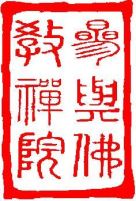
































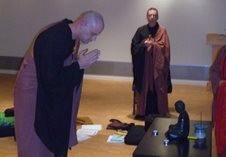

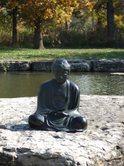







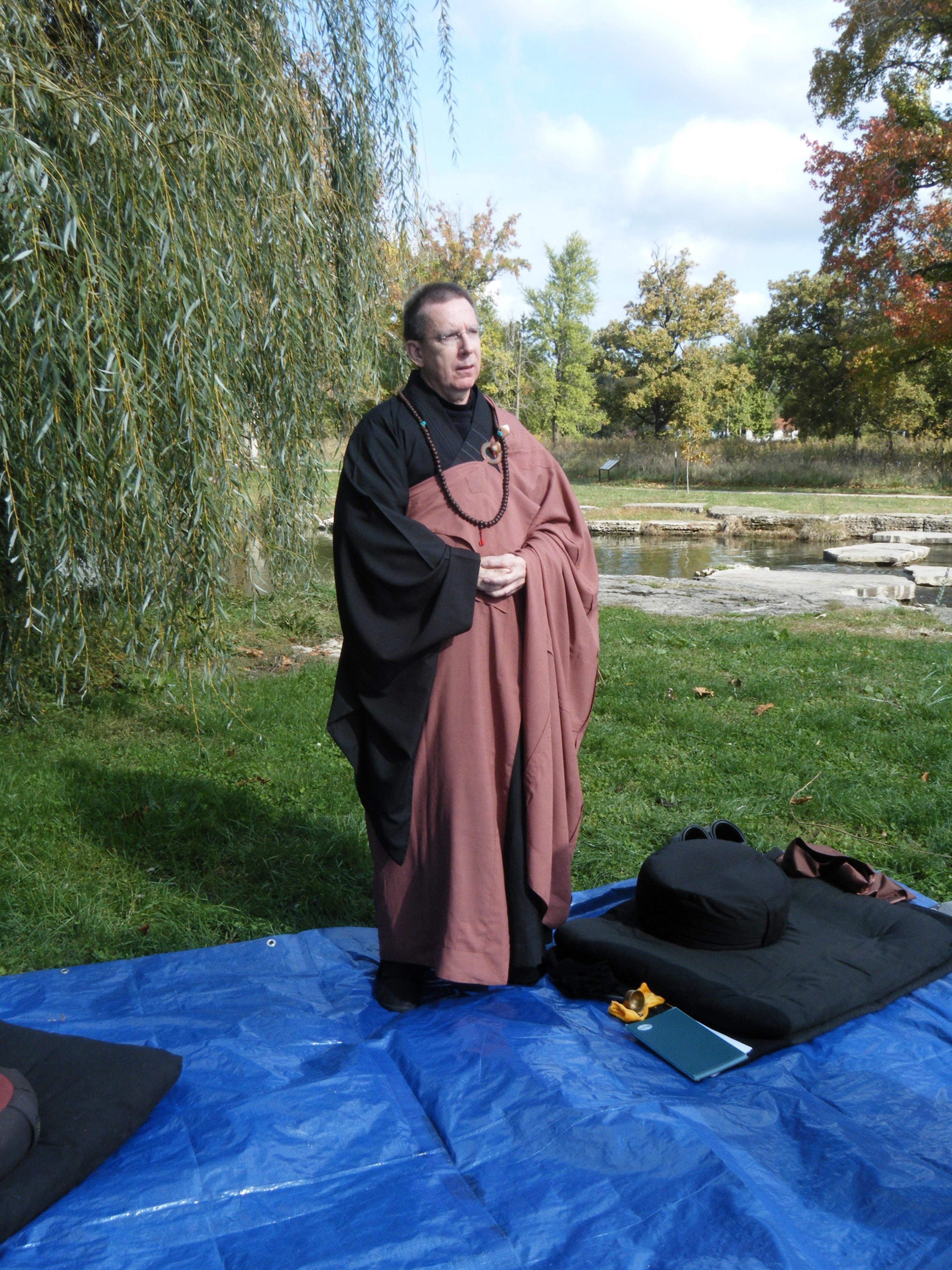






























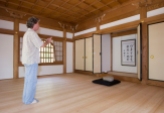






One of the best, most inspirational Dharma Talks I have ever heard! Ven. Brian Shen-Jin hits on every point, dead on, Bulls eye! Much Appreciation and Gratitude for your teaching. Xing Tzai